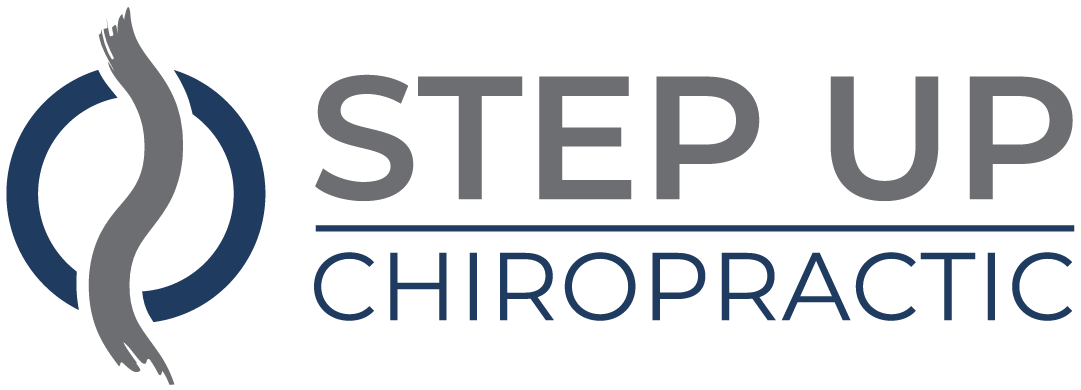When you experience sports-related pain, it's easy to brush it off as a normal part of the game. However, ignoring those signals can lead to more significant issues down the line, impacting not just your performance but your overall health. Seeking professional help early on can provide you with a clearer understanding of your injury and effective treatment options. You might be surprised at what a proper assessment reveals and how it can change your approach to training and recovery. So, what happens when you prioritize your well-being over the immediate discomfort?
Understanding Sports-Related Pain
When you engage in sports, understanding sports-related pain is vital for both performance and recovery. Pain isn't just a nuisance; it serves as your body's way of signaling that something might be wrong. By paying attention to these signals, you can better manage your activities and prevent further injury.
First, it's important to differentiate between acute and chronic pain. Acute pain usually arises suddenly, often due to a specific injury or event, while chronic pain lingers over time, frequently resulting from repetitive stress or improper techniques. Recognizing the type of pain you're experiencing can help you decide on the best course of action.
Next, consider the severity of the pain. Is it mild, moderate, or severe? This assessment can guide you in determining whether you need to modify your training, seek professional help, or even take a break from your sport. Ignoring severe pain can lead to long-term damage and hinder your athletic performance.
You should also be aware of the factors that contribute to sports-related pain. Poor technique, inadequate warm-ups, and lack of flexibility are often culprits you can address. Implementing proper training methods and recovery strategies can greatly reduce your risk of injury.
Lastly, don't hesitate to consult a medical professional if you're unsure about your pain. Getting a proper diagnosis guarantees you take the right steps toward recovery and helps you get back to doing what you love.
Common Types of Sports Injuries
Sports injuries can take many forms, each with its own causes and treatments. Whether you're a weekend warrior or a seasoned athlete, understanding common types of injuries can help you stay informed and proactive.
One of the most frequent injuries is a sprain, which occurs when ligaments are stretched or torn. You might experience this in your ankles or knees during sudden twists or falls.
Strains, on the other hand, involve muscles or tendons and often result from overexertion or improper lifting techniques. You may feel a sudden pain, stiffness, or swelling in the affected area.
Another common injury is tendonitis, often caused by repetitive motions. If you've ever felt pain in your elbow while playing tennis, you might be dealing with tennis elbow, a form of tendonitis.
Similarly, runner's knee is a prevalent issue for those who engage in running or cycling, resulting from overuse and causing pain around the kneecap.
Fractures, while less common, can occur in high-impact sports. A break can happen suddenly and may leave you unable to move the affected limb.
Finally, concussions, resulting from impacts to the head, are serious injuries that require immediate attention.
Recognizing these injuries and understanding their causes can empower you to take preventive measures. If you suspect you're injured, seeking help promptly can make a significant difference in your recovery process.
Risks of Ignoring Pain
Ignoring pain might seem like a quick fix, but it can lead to chronic injuries that sideline you for much longer.
You may also notice a drop in your performance levels, making it harder to compete at your best.
Taking pain seriously is vital for your long-term health and athletic success.
Chronic Injury Development
Pain is your body's way of signaling that something's wrong, and pushing through it can lead to chronic injuries that might sideline you for much longer. When you ignore pain, you're not just risking temporary discomfort; you're setting yourself up for long-term issues that can affect your performance and overall enjoyment of the sport.
Chronic injuries often develop from a lack of attention to early warning signs. For example, a minor strain can escalate into a serious tendonitis or a stress fracture if you don't seek help. By continuing to compete or train without addressing the underlying issue, you're likely to exacerbate the problem, making recovery more difficult and time-consuming.
The longer you wait to address your pain, the more entrenched the injury becomes, leading to potential changes in your movement patterns. These compensations can create additional strain on surrounding muscles and joints, increasing your risk of further injuries.
Instead of pushing through, listen to your body. Seek help early on to prevent chronic issues from developing, ensuring you stay active and healthy in the long run. Prioritize your well-being so you can continue to enjoy your sport without the burden of persistent pain.
Reduced Performance Levels
Neglecting early signs of discomfort can severely impact your performance levels. When you push through pain, you might find that your speed, strength, and agility diminish. Instead of focusing on your goals, you're constantly battling physical limitations. This can lead to frustration and decreased motivation, making it harder to enjoy your sport.
Ignoring pain doesn't just affect your current performance; it can also hinder your long-term potential. If you're sidelined by an injury that could have been treated early, you miss vital training time. This gap can set you back, making it difficult to regain your previous form.
Moreover, compensating for pain often leads to improper techniques, increasing the risk of further injuries. You might notice that your coordination and balance suffer, which can result in a vicious cycle of declining performance.
Benefits of Professional Assessment
When you're dealing with sports-related injuries, getting a professional assessment can make all the difference.
It's crucial to understand not just the pain you're experiencing, but also the underlying issues that could be causing it. A trained professional can evaluate your condition using specialized techniques and tools, ensuring you receive an accurate diagnosis. This clarity allows you to address the root cause of your pain rather than just masking the symptoms.
Moreover, a professional assessment provides you with a personalized action plan tailored to your specific needs. You'll learn about your injury's severity and the best practices to aid recovery. This targeted approach can save you time and prevent further complications, helping you return to your sport stronger and more resilient.
Another key benefit is the professional's ability to identify potential risk factors. They can pinpoint biomechanical issues, muscle imbalances, or training errors that may contribute to your injury. With this knowledge, you can implement strategies to avoid similar issues in the future.
Additionally, having a professional assess your injury can provide peace of mind. You'll know exactly what you're dealing with and how to proceed, which can reduce anxiety related to uncertainty.
Treatment Options Available
Finding the right treatment options for sports-related pain can greatly impact your recovery and overall performance. When you experience pain, it's essential to explore a range of therapies tailored to your specific condition.
One effective option is physical therapy. A trained therapist can guide you through exercises that strengthen the affected area, improve flexibility, and promote healing. They'll also teach you proper techniques to prevent future injuries.
If your pain stems from inflammation, modalities like ice therapy or ultrasound might be recommended to reduce swelling and accelerate recovery.
In some cases, your healthcare provider might suggest medications. Over-the-counter nonsteroidal anti-inflammatory drugs (NSAIDs) can help alleviate pain and reduce inflammation. For more severe cases, prescription medications may be necessary, but these should always be taken under professional guidance.
Another treatment avenue involves therapeutic injections. Corticosteroid injections can provide temporary relief from inflammation, allowing you to engage in rehabilitation exercises more comfortably.
If conservative treatments don't yield results, you might consider advanced options like platelet-rich plasma (PRP) therapy or stem cell therapy. These innovative treatments harness your body's natural healing properties to repair damaged tissues.
Lastly, don't overlook the importance of rest and active recovery strategies, like gentle stretching and low-impact activities.
Importance of Early Intervention
Early intervention is essential for managing sports-related pain effectively. When you experience pain, it's vital to address it as soon as possible. Waiting too long can lead to more severe injuries, prolonged recovery times, and even a loss of mobility.
By seeking help early, you can often prevent minor issues from escalating into major problems that sideline you for weeks or months.
You might think that pushing through the pain is a sign of toughness, but that mindset can be detrimental. Ignoring symptoms can lead to compensatory movements, which may cause additional injuries elsewhere in your body.
Instead of toughing it out, listen to your body. If something feels off, it's better to consult a healthcare professional who specializes in sports injuries.
Early intervention also allows for more effective treatment options. When you address pain early, you can often utilize non-invasive methods like physical therapy, ice, or rest.
These strategies can promote quicker healing and get you back on the field sooner. Conversely, delaying treatment might lead to the need for more invasive procedures or extended periods of inactivity.
In addition, early intervention helps you maintain a consistent training schedule. When you mitigate pain quickly, you can stick to your routine, improving your performance and overall fitness.
Role of Rehabilitation Programs
Rehabilitation programs play an essential role in your recovery from sports-related injuries.
They offer customized treatment plans that address your specific needs, along with strategies for injury prevention and performance enhancement.
Customized Treatment Plans
When it comes to managing sports-related pain, customized treatment plans play an important role in your recovery. These plans are tailored specifically to your unique needs, goals, and the nature of your injury. By taking into account your physical condition, activity level, and personal preferences, rehabilitation professionals can design a strategy that maximizes your healing potential.
A customized treatment plan often includes a combination of therapies, such as physical therapy, manual therapy, and exercise regimens aimed at restoring strength and flexibility. You'll also receive guidance on pain management techniques to help you cope with discomfort during your recovery. By addressing the root cause of your pain, you're more likely to achieve long-lasting results.
Additionally, these plans often involve regular assessments to track your progress and make necessary adjustments. This proactive approach guarantees that you stay on the right path toward recovery and minimizes the risk of re-injury.
Ultimately, investing in a customized treatment plan not only helps alleviate your current pain but also equips you with the tools to maintain your physical health long-term. Don't hesitate to seek professional help; it's a crucial step in getting back to the sport you love.
Injury Prevention Strategies
Injury prevention strategies are essential for athletes looking to maintain peak performance and stay in the game. One effective approach is participating in rehabilitation programs designed to minimize the risk of injury. These programs focus on strengthening muscles, improving flexibility, and enhancing overall body mechanics.
By committing to a structured rehab program, you can markedly reduce your chances of injury.
Here are three key strategies to evaluate:
- Strength Training: Incorporate exercises that target specific muscle groups used in your sport. Building strength helps stabilize joints and prevent overexertion during activity.
- Flexibility and Mobility Work: Implement a regular routine of stretching and mobility exercises. Improved flexibility can enhance your range of motion and decrease the likelihood of strains.
- Proper Technique: Work with coaches or trainers to refine your technique. Using the correct form reduces stress on your body and minimizes the risk of injuries.
Performance Enhancement Techniques
Athletes often underestimate the role rehabilitation programs play in not just recovery, but also in enhancing performance. When you think of rehab, you might picture just getting back from an injury, but it's much more than that.
A well-structured rehabilitation program can improve your strength, flexibility, and endurance, giving you a competitive edge. These programs focus on addressing muscle imbalances and optimizing your movement patterns. By working with a trained professional, you'll learn specific exercises tailored to your sport, which can enhance your overall performance.
Rehab isn't just about healing; it's about returning stronger and more resilient. Additionally, incorporating mental strategies into your rehabilitation can boost your confidence and focus, which are vital during competitions.
Visualization techniques and goal-setting are often used to keep you motivated and on track.
Long-Term Health Considerations
Long-term health considerations are often overlooked, yet they play an essential role in your overall well-being after sports-related pain. Ignoring the potential long-lasting effects of your injuries can lead to chronic conditions that affect your quality of life.
By addressing these issues proactively, you can safeguard your future health and enjoy a more active lifestyle.
Here are three important long-term health considerations to keep in mind:
- Chronic Pain Management: Failing to seek help for sports injuries can result in persistent pain that interferes with daily activities. Early intervention can help alleviate this pain, preventing it from becoming a lifelong burden.
- Joint Health: Injuries can cause wear and tear on your joints, leading to arthritis or other degenerative conditions down the line. Regular check-ups and appropriate treatment can help maintain joint integrity and function, keeping you active.
- Muscle Imbalances: Overcompensating for pain can lead to muscle imbalances that affect your overall biomechanics. Addressing these imbalances through physical therapy can enhance your performance and reduce the risk of further injuries.
Taking care of your body isn't just about immediate recovery; it's about investing in your long-term health.
By seeking help for sports-related pain, you're not only addressing the current issue but also setting yourself up for a healthier, more active future.
Don't wait until it's too late—prioritize your long-term well-being today!
Conclusion
In conclusion, seeking help for sports-related pain isn't just smart—it's essential. By addressing issues early, you can prevent minor problems from turning into chronic injuries. Professional assessments provide personalized treatment options, helping you recover effectively and safely return to your sport. Remember, ignoring pain can jeopardize your performance and overall health. Prioritizing your well-being guarantees you stay at the top of your game for years to come. Don't wait; get the help you need today!




